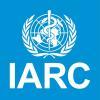News Center: Main Articles Archive
Same Advice Was Given in 2019

April 13, 2024
Director Sends Mixed Signals

March 21, 2024
Seven New Commissioners
Akimasa Hirata To Be New Leader

December 11, 2023
Setting the Record Straight
A Personal Tribute

October 8, 2023
Author of “The Zapping of America” and “Currents of Death” Among Many Other Books

August 10, 2023
The Lai-Singh DNA Breaks 30 Years On
A Conversation with Henry Lai

June 12, 2023
Twenty-Two Years and Counting

May 4, 2023
Why Don’t the Tenets of Toxicology Apply?

February 28, 2023
Dissident Scientists Seek Tighter Health Limits Will They Succeed Where Others Failed?

November 1, 2022
